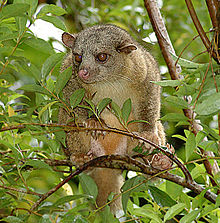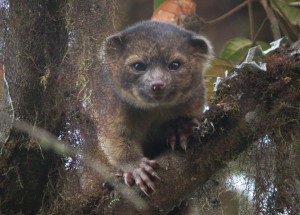Do they look the same to you?
The one on the left is an Olingo.
The one on the right is an Olinguito (oh-lihn-gee-toe) scientific name Bassaricyon neblina. Right, it is a new species very much different from an Olingo. This teddy bear-house cat-look-alike is smaller, has a rounder face, tinier ears, shorter tail, and has darker bushier fur than its sister Olingo. But despite these differences, it has been mistaken as the latter for the past 100 years. Smithsonians National Museum of Natural History led by Dr. Kristofer Helgen discovered the differences between these 2 species from skeletons in a museum.
Olinguitos are found in the mountainous forest of Ecuador and Columbia. These nocturnal omnivores hop from one tree to another looking for fruits and meat. They have one offspring at a time.
Considering that they are dependent on trees for their food and shelter, one important question sprang into mind. How long do they have before their humble habitats are urbanized?
Olinguitos have lived for 100 years before its true identity discovered. Are there still other species left unidentified? Could it be possible that new species sprang from cross-breeds that Science does not know about?
I am also wondering, could it be possible that there have been species in this lifetime which have lived, thrived, and eventually became extinct without being identified because environmental factors that led to their extinction (i.e urbanization) were greater than their discovery?
I am also wondering if urbanization could be stopped to pave way for these beautiful creatures.
You might also like


